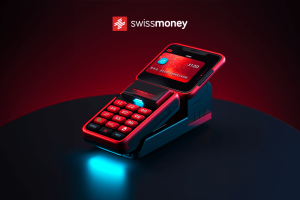In an increasingly interconnected and digitally driven world, the way we handle financial transactions is rapidly evolving. Cashless payment methods have become the new norm, reshaping the very foundation of commerce.
From mobile wallets and contactless cards to cryptocurrency and peer-to-peer transfers, the era of physically exchanging cash is giving way to a seamless, electronic ecosystem.
In this article, we embark on a journey into the realm of cashless payments, unraveling the intricacies of this transformative financial landscape.
What are cashless payments?
Cashless payments encompass various forms of monetary transactions without physical cash exchange. It can transpire online and in brick-and-mortar stores via point-of-sale (POS) systems.
Cashless payments have ushered in many opportunities for businesses and consumers alike.
The latest technologies such as NFC-based mobile payment systems, contactless payments, and digital wallets are digitizing the payments process and facilitating convenient transactions worldwide.
This way it empowers customers with diverse and seamless payment options.
In the events industry, the concept of cashless payments extends beyond mere cashlessness. It embodies a financial ecosystem where buyers and sellers unite within a payment system that comprehensively manages and stores transaction data.
What are the cashless payment methods?
Big or small businesses, whether retail stores, restaurants, taxi services, or freelance professionals and online marketers, have many options for accepting cashless payments:
Credit and debit cards
Long-standing favorites that have been replacing cash payments for some time. This payment method involves card insertion into a reader and verification through a PIN or signature.
Also, you can use your credit or debit cards to make online payments. Simply input your 16-digit card number, the date it expires, and the CVV code, verify the transaction, and you’ll be good to go.
If you use a debit card, your money is deducted from your account immediately.
In contrast, credit card payments are typically processed after the billing cycle and deducted from the associated bank account.
However, debit and credit cards offer the same safety and ease of use.
Mobile payments
Another one of the cashless payment methods is mobile payments. To make a mobile payment, you need to use a card reader, which is compatible with the EC cash payment method, or transact business online.
Some of these card readers rely on near-field communication (NFC), which limits their range to a few inches. Digital wallets, such as Google Pay, Apple Pay, and any other similar mobile payment system, let you facilitate online payments via smartphones.
Peer-to-peer (P2P) payments
P2P payments provide a straightforward means to send money to friends, family, or acquaintances without physical cash or checks.
These transactions can encompass various scenarios, from splitting a restaurant bill among friends to paying rent, sharing travel expenses, or gifting money for special occasions.
Central Bank Digital Currency (CBDG)
Central Bank Digital Currency (CBDC) is a groundbreaking concept. It represents a form of digital currency issued and regulated by a country’s central bank, making it distinct from cryptocurrencies like Bitcoin or Ethereum. CBDCs have garnered considerable attention due to their potential to transform traditional monetary systems.
Bank transfers
The electronic movement of funds directly from one bank account to another characterizes bank transfers. People widely use this method for online payments and direct payments.
Bank transfers offer a secure and efficient means of transferring money, commonly used for paying bills, settling invoices, or sending money to family and friends.
Buy now, pay later
The “Buy Now, Pay Later” model empowers customers to postpone payments for a predetermined period, ranging from a few weeks to several months.
This approach finds particular favor in the e-commerce sphere. It grants consumers increased flexibility when making purchases. By deferring payments, customers promptly acquire and utilize the product or service, with the option to settle the bill later.
Cryptocurrency
Cryptocurrencies like Bitcoin and Ethereum epitomize a digital and decentralized form of currency that garners substantial attention as an alternative payment method.
These digital currencies employ blockchain technology, enabling secure and transparent transactions. Their attraction stems from their potential to facilitate rapid international transfers, reduce transaction costs, and, in some instances, provide anonymity.
Cryptocurrencies operate independently of traditional financial institutions and government regulations, positioning them as a unique and disruptive force in the domains of finance and commerce.
Online payment providers
Online payment providers, such as PayPal, Klarna, Giropay, and Amazon Pay, present a diverse array of payment methods and services.
These platforms serve as intermediaries between customers and businesses, streamlining secure and convenient transactions. They enable customers to execute direct debits, utilize prepaid credit cards, or establish accounts with stored balances.
Online payment providers elevate the online shopping experience by offering a multitude of options for cashless transactions to accommodate various customer preferences. Simultaneously, they furnish an additional layer of security and convenience.
SEPA direct debit
The Single Euro Payments Area (SEPA) Direct Debit system simplifies recurring payments, encompassing expenses like utility bills or subscription services.
Customers provide written consent through a SEPA Direct Debit mandate. It lets businesses withdraw payments from their bank accounts automatically.
These cashless payments diminish the manual effort required for processing recurring payments and enjoy international recognition within the SEPA zone. It streamlines cross-border transactions within participating European countries.
Advance payment
This method typically entails bank transfers and constitutes a practice where customers submit payments before they receive the goods.
It enhances security for businesses by ensuring that payment precedes order fulfillment. It mitigates financial risk and potential losses associated with unfulfilled payments, rendering it a favored choice for high-value or customized orders.
Simultaneously, customers gain the assurance that their payment is secured before they receive the product or service, fostering trust in the transaction.
Contactless payments vs cashless payments
Contactless payments are any transaction between a buyer and seller that does not include physical contact.
NFC-based ‘tap to pay’ and ‘EMV chip card’ transactions, for instance, allow customers to pay for items at checkout with merely a tap or wave of their card.
Therefore, contactless payments allow you to purchase without ever having to insert it into a reader or enter your PIN.
on the other hand, any cashless payment does not involve the exchange of actual cash, such as banknotes or coins. Inserting a credit card into a card terminal is a cashless payment. But it is not one of contactless payments.
Therefore, every contactless payment is a cashless payment. However, not every cashless payment is contactless.
Benefits of cashless payment systems
Cashless payment systems have many advantages that make them a go-to choice for more and more customers. Here are some of them.
Convenience
Cashless transactions encompass various payment methods, fostering inclusivity and accessibility. Businesses can expand their customer base by offering versatile choices such as mobile payment apps and digital wallets.
This strategy not only increases market reach but also fosters customer loyalty, ensuring that no potential transaction remains untapped.
Speed
The efficiency of cashless payments offers substantial benefits for both customers and businesses.
Contactless payments process three times faster than traditional cash transactions, taking only one or two seconds instead of the six to seven seconds required for cash payments.
For businesses, especially during peak hours, such as commuting times, going cashless streamlines the checkout process, increases sales, and boosts profits. It also reduces waiting times, potentially attracting time-pressed customers.
Moreover, with fewer physical cash-handling requirements, they can reduce expenses associated with additional staff, security, and cash registers.
Cashless payments empower salespersons or waitstaff to serve as cashiers, using their smartphones to process cashless transactions anywhere in the store, restaurant, or on the go.
Security
Every digital payment service provider prioritizes security through varying levels of encryption and data authentication. Many employ two-factor authentication (TFA) to enhance security.
Alongside robust security measures, the sheer convenience of carrying a smartphone instead of cumbersome cash cannot be overstated.

Better accounting
Cashless payments offer a distinct advantage in terms of record-keeping. Unlike cash transactions, they facilitate the maintenance of comprehensive digital transaction records.
Digital payments allow you to effortlessly track expenditures, monitor account balances, and access transaction histories across various channels.
This convenience extends to accounting. Employing an electronic Point of Sale (ePOS) system to process digital transactions generates automated electronic records. It can seamlessly integrate with accounting software or be transmitted directly to your accountant.
Rewards
In a concerted effort to drive the transition toward a cashless economy, the government has rolled out a comprehensive range of incentives and discounts for online payments.
These incentives encompass waivers on service tax payments, fuel purchases, train tickets, highway toll fees, and insurance schemes, all of which now benefit from cashless transactions.
Furthermore, businesses embracing cashless payments may find themselves attracting a larger customer base seeking to capitalize on rewards points and cashback offers provided by credit card companies.
Can you go cashless in the UK?
Yes, you can adopt a cashless approach in the UK. The United Kingdom has enthusiastically embraced digital payments, providing various options for cashless transactions.
You can use debit and credit cards for most purchases, and contactless payments have gained increasing popularity. Mobile payment apps such as Apple Pay, Google Pay, and various banking apps enable cashless transactions.
Additionally, the UK’s public transportation system, including buses and the London Underground, often favors contactless or mobile payments over cash.
While many places still accept cash, going cashless in the UK is entirely feasible and offers convenience for everyday transactions.

